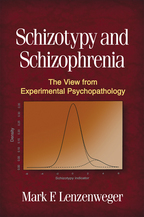Schizotypy and Schizophrenia
The View from Experimental Psychopathology
Mark F. Lenzenweger
1. “Welcome to the Machine”
II. The Experimental Psychopathologist’s Toolbox
2. Reliability, Validity, and How We Collect Data
3. Practical Tools and Pragmatic Issues
4. Analytic Heuristics, Caveats, and Soapbox Moments
III. Schizotypy Viewed from the Laboratory
5. Recognizing the Schizotype
6. Begin with a Model
7. Genetics, Genomics, Phenotypes, and Endophenotypes: The Challenge of Complex Disease
8. Probing Critical Neurocognitive Endophenotypes: Attentional Dysfunction, Executive and Working Memory Functioning, Eye-Movement Dysfunction, and Thought Disorder
9. Motion and Touch: Simpler May Be Better
10. The Schizotype through Time…
11. Now, Just What about This “Type” Business in “Schizotype”?
IV. Reactions, Reflections, and Projections
12. Thoughts on Impediments, Imaging, Environment, Intervention, and Innovation
Appendix A. Summary Rating Sheet from Manual for Use with Checklist of Schizotypic Signs
Appendix B. Selected Quantitative Measures of Schizotypy
Appendix C. Getting Started: A Provisional Reading List



